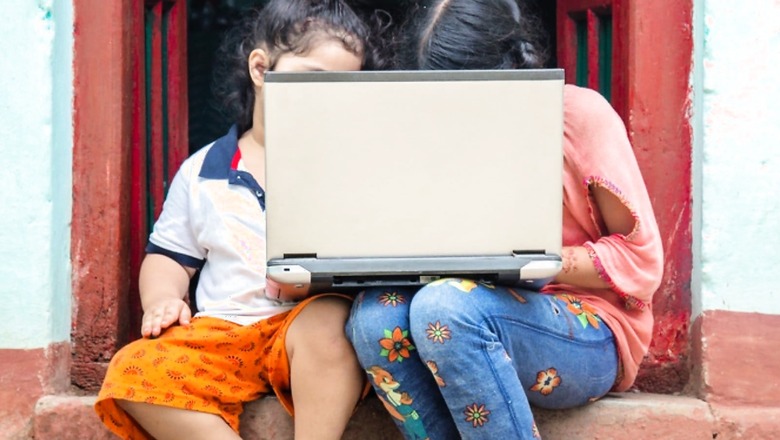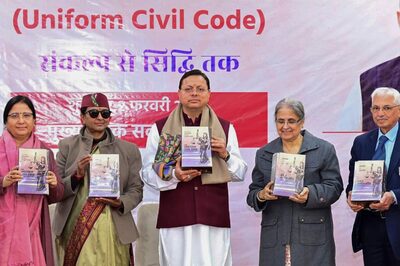
views
The COVID-19 pandemic has adversely impacted children’s education. Over the last year-and-a-half, various digital or Information and Communications Technology (ICT)-based learning tools have been deployed to ensure continuity in learning. During the lockdown, when students were unable to attend schools, efforts were made to deliver education through technology-based platforms.
Ministry of Education has implemented several initiatives to assist students and teachers in their pursuit of education. Digital Infrastructure for Knowledge Sharing (DIKSHA), launched in September 2017, is a national platform for school education covering grades one to twelve. DIKSHA can be accessed through a web portal and mobile application. It is envisaged that it will benefit nearly 25 crore school-going children across the country.
DIKSHA provides access to a large number of curricula-linked e-content, including use cases and solutions such as QR-coded Energized Textbooks (ETBs), courses for teachers and quizzes. A comprehensive initiative called PM eVidya was announced on May 17, 2020, with the objective of enabling multi-modal access to education for all students.
In the wake of COVID-19, state governments proactively initiated various programmes to ensure children do not lose out on any opportunity to learn and continue their academic progress. The School Education Department of Madhya Pradesh, for instance, has initiated various digital learning interventions such as Radio School, Digital Learning Enhancement Programme (DigiLEP), Hamara Ghar Hamara Vidyalaya programme, Shiksha ka Kona, mohalla classes and Knowledge Hub for Electronic Learning (KHEL), among others.
ALSO READ | As We Talk about Online Learning during COVID-19, Let’s Bridge the Digital Divide for Girls
DigiLEP, launched on April 8, 2020, provides learning opportunities to more than 19 lakh parents and 2 lakh teachers through 50,000 WhatsApp groups. Every teacher connects with at least five students daily, and supports them in their education. Teachers also connect with parents and orient them on DigiLEP initiatives. Further, teachers have started ‘mohalla classes’ in which groups of 5-6 students come together to study using one radio or mobile device, under the supervision of a teacher.
The Challenges
While online and distance education can play an important role, especially during unpredictable and difficult times like the pandemic, several challenges need to be addressed to enhance the effectiveness of digital education initiatives. These include non-availability of digital devices like computers, laptops, tablets and smartphones for children. Poor network connectivity and costly data are also hurdles for online education. Further, teaching materials need to be adapted for online learning. Another challenge is that teachers and students can at times feel isolated during this era of online teaching and learning.
Some studies have examined the impact of COVID-19 pandemic on the learning outcomes of students as well as the effectiveness of the online education system. Research undertaken by Azim Premji Foundation in September 2020, for instance, reveals the ineffectiveness of online learning solutions in providing meaningful learning opportunities, perhaps on account of exclusion of a majority of children and the professional frustration of teachers. The study highlights that most children who attended in-person classes prior to the pandemic could not access online learning opportunities.
Another study conducted by Azim Premji Foundation in January 2021 reveals the extent and nature of the learning loss among children in primary classes due to closure of public schools during the pandemic. According to the study, 92 per cent children on average have lost at least one specific language ability and 82 per cent have lost at least one specific mathematical ability compared to the previous year across all classes.
Fixing the Gaps
To ensure quality in online education, it is imperative to focus on developing better infrastructure as well as appointing technical facilitators for instructing teachers and students on the effective use of technology, internet and various e-learning applications. It is also necessary to facilitate the availability of digital devices like computers, laptops, tablets, and smartphones for all children regardless of gender, socio-economic status and location (urban, rural, or remote).
Providing continuous training and capacity building for teachers in the field of online education is another crucial intervention as is the need for new and effective pedagogical approaches for motivating and engaging students during online learning. Last, in-depth research on the challenges faced by teachers, students and administrators can facilitate the design of more targeted strategies for enhancing the reach and impact of online education in the country.
Bishun Kumar Chaurasia is Economic Officer and Vijender Kumar is Monitoring & Evaluation Lead at Development Monitoring & Evaluation Office, NITI Aayog. The views expressed in this article are those of the authors and do not represent the stand of this publication.
Read all the Latest News , Breaking News and IPL 2022 Live Updates here.




















Comments
0 comment